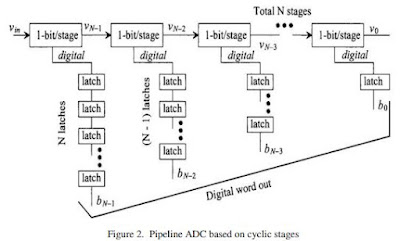11th International Conference on Digital Image Processing
and Pattern Recognition (DPPR 2021)
November 27 ~ 28, 2021, Dubai, UAE
https://cndc2021.org/dppr/index
Scope
11th
International Conference on Digital Image Processing and Pattern Recognition
(DPPR 2021)
is a forum for presenting new advances and research results in the fields of
Digital Image Processing. The Conference will bring together leading
researchers, engineers and scientists in the domain of interest from around the
world. The scope of the conference covers all theoretical and practical aspects
of the Digital Image Processing & Pattern Recognition, from basic research
to development of application.
Authors are
solicited to contribute to the journal by submitting articles that illustrate
research results, projects, surveying works and industrial experiences.
Topics of Interest
·
Image
acquisition & Medical Image Processing
·
Pattern
Recognition and Analysis
·
Visualization
·
Image
Coding and Compression
·
Face
Recognition & Super-resolution Imaging
·
Image
Segmentation
·
Face
Recognition
·
3D
and Surface Reconstruction
·
3D
and Stereo Imaging
·
Analog
and Mixed Signal Processing
·
Application
& Others
·
Applications
(Biomedical, Bioinformatics, Genomic, Seismic, Radar, Sonar, Remote Sensing,
Positioning, etc.)
·
Array
Signal Processing
·
Audio/Speech
Processing and Coding
·
Digital
& Mobile Signal Processing
·
Statistical
& Optical Signal Processing
·
Data
Mining Techniques
·
Motion
Detection
·
Content-based
Image retrieval
·
Video
Signal Processing
·
Watermarking
·
Detection
and Estimation of Signal Parameters
·
Signal
Identification
·
Nonlinear
Signals and Systems
·
Time-Frequency
Signal Analysis
·
Signal
Reconstruction
·
Spectral
Analysis
·
Filter
Design and Structures
·
FIR,
IIR, Adaptive Filters
·
Signal
Noise Control
·
Multiple
Filtering and Filter Banks
·
Biomedical
Imaging Technologies
·
Biometrics
and Pattern Recognition
·
Cognitive
and Biologically-Inspired Vision
·
Color
and Texture
·
Communication
Signal processing
·
Distributed
Source Coding
·
Computer
Communication and Networks
·
Computer
Vision & VR
·
Constraint
Processing
·
Document
Recognition
·
DSP
Implementation and Embedded Systems
·
Face
and Gesture
·
Hardware
Implementation for Signal Processing
·
Higher
Order Spectral Analysis
·
Illumination
and Reflectance Modeling
·
Image
and Video Retrieval
·
Image
Processing & Understanding
·
Image-Based
Modeling
·
Internet
Signal Processing
·
Knowledge
Representation and High-Level Vision
·
Medical
Image Analysis
·
Motion
and Tracking Stereo and Structure from Motion
·
Multidimensional
Signal Processing
·
Multi-view
Geometry
·
Neural
Networks and Genetic Algorithms
·
Object
Detection, Recognition and Categorization
·
Pattern
Recognition in New Modalities
·
PDE
for Image Processing
·
Performance
Evaluation
·
Radar
Signal Processing
·
Remote
Sensing
·
Segmentation
·
Sensor
Array and Multi-Channel Processing
·
Shape
Representation
·
Signal
Processing Education
·
Sonar
Signal Processing and Localization
·
Speech,
Audio and Music Processing
·
Statistic
Learning & Pattern Recognition
·
Text
Processing
·
Time-Frequency/Time-Scale
Analysis
·
Video
Analysis and Event Recognition
·
Video
Compression & Streaming
·
Video
Surveillance and Monitoring
Paper Submission
Authors are
invited to submit papers through the conference Submission
System
by November 14,
2021 (Final Call). Submissions must be original and should not have
been published previously or be under consideration for publication while being
evaluated for this conference. The proceedings of the conference will be
published by Computer Science
Conference Proceedings in Computer Science
& Information Technology (CS & IT) series (Confirmed).
Selected papers
from DPPR 2021, after further
revisions, will be published in the special issue of the following journals.
·
Signal & Image Processing :
An International Journal (SIPIJ)
·
International Journal of VLSI Design
& Communication Systems (VLSICS)
·
International Journal of Embedded
Systems and Applications (IJESA)
·
International Journal on Organic
Electronics (IJOE)
·
Information
Technology in Industry (ITII)New - ESCI(WOS)
Indexed
Important Dates
·
Submission Deadline: November 14, 2021 (Final
Call)
·
Authors
Notification: November 22, 2021
·
Registration
& Camera-Ready Paper Due: November 24, 2021
Contact Us
Here's where you can reach us: dppr@cndc2021.org
(or) dpprc@yahoo.com
For
more details, please visit: https://cndc2021.org/dppr/index
Paper Submission
Link: https://cndc2021.org/submission/index.php





















